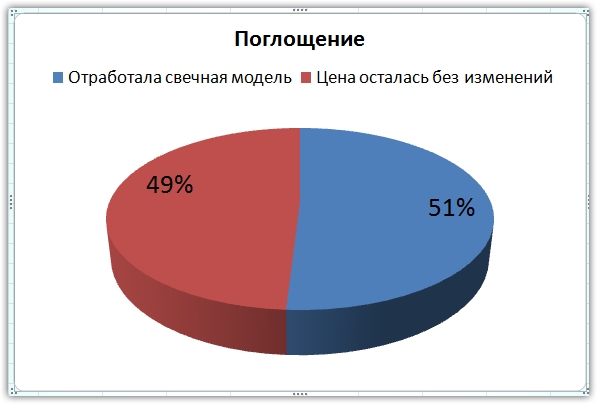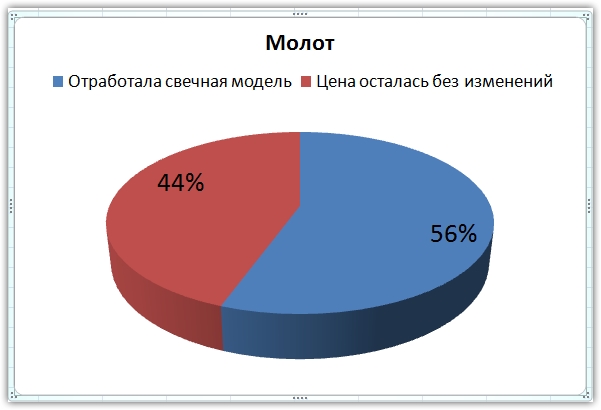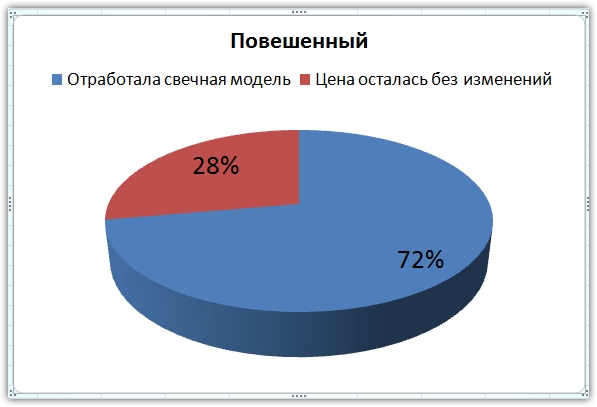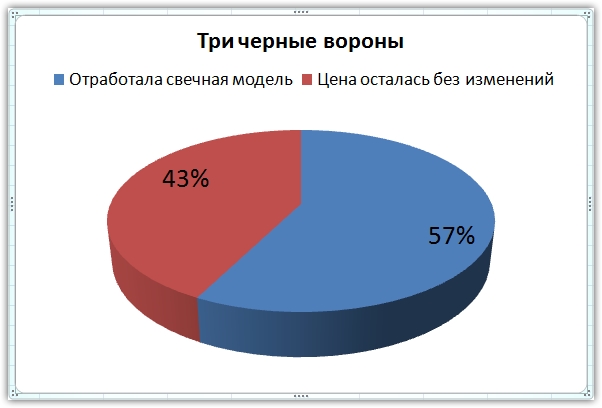Evaluating the effectiveness of the most popular candlestick patterns
Every textbook on stock trading tells us that the price chart is the very first source of information that a trader needs to look at, and only then apply any indicators and trading systems.

Indeed, many books are devoted to chart analysis, and candlestick analysis occupies a special hierarchy, since trading without the use of any trading tools is the highest aerobatics that almost all novice traders strive for.
Over time, traders have identified about three dozen different candlestick patterns, many of which actually work, and some of which ceased to show effectiveness as markets changed.
However, there are the most popular candlestick models, of which there are no more than 5 pieces.
They have become popular not because of their effectiveness, but only because they are very common and easily identified by sight.
But are popular candlestick patterns really that effective?
Can the simplest combinations, which occur so often and are easy to analyze even for beginners, produce profitable trades? Unfortunately, you will not find answers to these questions on any website, so we decided to work with you to evaluate the effectiveness of the most popular candlestick models.
Of course, we will not use complex computational formulas, but we will only learn from history which candlestick patterns really work, what percentage of this or that combination works, and draw conclusions about the possible effectiveness of trading using the most common candlestick patterns.
To conduct our research, we chose a period of six months, namely from January 1, 2015 to June 30, 2015. The effectiveness assessment will be carried out only on the euro/dollar currency pair on an hourly time frame, so the results that will be obtained show the real situation only under such conditions, since if you change the instrument or time period, the result may be completely different.
Why euro/dollar and hourly chart?
Everything is very simple, the hourly chart is used by most traders when analyzing Japanese candlesticks, and the euro/dollar due to the fact that it is the most commonly used currency pair. We have made a certain constant for ourselves, namely, if the price has passed at least 15 points after the signals appear, then the pattern is effective, but if not, then we classify it as unprofitable.
The first candlestick pattern that we decided to consider is called “ Absorption ”. In short, this is a reversal type pattern that consists of two candles, with the body of the second candle completely covering the first. During the course of the study, over six months, we recorded 53 transactions, and this combination appeared so often that when analyzing the history, it seemed that it was everywhere.
However, of all the signals that appeared, only 27 worked, and in the remaining 26 cases the trend continued to move. Thus, the absorption efficiency is extremely weak, since in 49 percent of cases the price remains unchanged, and in 51 percent of cases the price has overcome the 15-point barrier.
 The second equally popular candlestick pattern, which is very easy to use and often occurs, is the Hammer . The hammer is a reversal candlestick pattern and appears in a bear market as a white candlestick with a long shadow and a small body, much like a hammer.
The second equally popular candlestick pattern, which is very easy to use and often occurs, is the Hammer . The hammer is a reversal candlestick pattern and appears in a bear market as a white candlestick with a long shadow and a small body, much like a hammer.
During the study, it turned out that within six months, 36 cases of the appearance of the Hammer were recorded, and 20 signals actually showed a market reversal, and in the remaining 16 cases the price continued its trend.
Against the backdrop of “Absorption”, the hammer turned out to be more effective, since in 56 percent of recorded transactions the price overcame the 15-point barrier, and in 44 percent of cases the price continued to move without any changes in the direction of the trend.

Also often used is the “Hanged Man” candlestick model, which is practically an analogue of the “Hammer” discussed above. It appears on a bullish trend in the form of a candle with a long lower shadow, a weak body and virtually no upper tail.
Unlike the Hammer, the pattern appeared extremely rarely over the course of six months, and a total of 18 cases were recorded, with the market actually turning around in 13 and continuing its movement in 5. The effectiveness of the “Hanged Man” is much higher, since in 72 percent of transactions the price easily overcame the 15-point barrier, and in 28 percent of cases the trend continued to move without any changes.
 The fourth candlestick pattern, which refers to the continuation of the trend and is used quite often by beginners, is called the “ Three Black Crows ”. Consists of three gradually decreasing bullish candles, which indicate the birth of a new trend if it arose in a bullish market or the continuation of a trend if it arose in a bearish trend.
The fourth candlestick pattern, which refers to the continuation of the trend and is used quite often by beginners, is called the “ Three Black Crows ”. Consists of three gradually decreasing bullish candles, which indicate the birth of a new trend if it arose in a bullish market or the continuation of a trend if it arose in a bearish trend.
Over the six months analyzed, the combination occurred 40 times, and in 23 cases the price moved in the direction of the signal, and in 17 cases there was a price reversal or return to the starting point. In 57 percent of cases, the candlestick combination worked out successfully and only in 43 percent of cases, an unwanted reversal occurred.
 At the end of the study, it became obvious that the “Absorption” pattern at this stage is weakly effective, since if we take into account the error in the calculations, which can be 1-2 percent, then using this pattern you are playing with a coin and nothing more.
At the end of the study, it became obvious that the “Absorption” pattern at this stage is weakly effective, since if we take into account the error in the calculations, which can be 1-2 percent, then using this pattern you are playing with a coin and nothing more.
The most effective pattern among those considered was “The Hanged Man,” and its high percentage of success allows us to use it even on Binary Options , and even more so on the Forex market.
